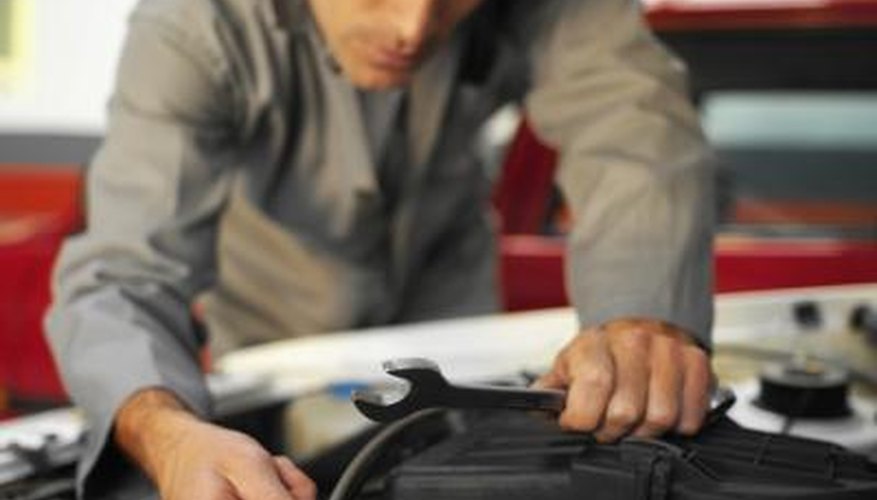Starter motor solenoids usually have four electrical terminals. The two small terminals are used to activate or energise the solenoid. During activation, the solenoid operates a switch that connects the battery to the starter. The larger terminals of the solenoid are designed to carry full battery voltage and current from the battery to the starter. One of the two large terminals connects directly to the battery via a battery cable. The second terminal connects to a small bar connected directly to the starter. That bar acts as a wire between the solenoid and the starter.
- Starter motor solenoids usually have four electrical terminals.
- The larger terminals of the solenoid are designed to carry full battery voltage and current from the battery to the starter.
Identify the large and small terminals on the solenoid. One of the large terminals should connect to the starter. External solenoids will connect to the starter through a large red wire similar to a battery cable. Other solenoids are mounted directly to the starter. These solenoids use a metal bar as a conductor between the solenoid and the starter. That terminal is bolted directly to the starter.
- Identify the large and small terminals on the solenoid.
- Other solenoids are mounted directly to the starter.
Disconnect the black negative battery cable with a wrench.
Remove all of the nuts on the solenoid terminals by hand or with a small wrench. Connect the wire between the starter and the starter terminal of the solenoid for external solenoids. For solenoids attached to the starter, insert the starter terminal screw through the hole in the metal bar of the starter. Place a nut on the screw and tighten it with a regular box or socket wrench. This uses one of the two large terminals on the solenoid.
- Remove all of the nuts on the solenoid terminals by hand or with a small wrench.
- Place a nut on the screw and tighten it with a regular box or socket wrench.
Connect a red battery cable between the positive battery post and the second large terminal on the starter. Place a nut on that terminal and secure it with the box wrench.
Attach the one or two ignition switch wires to the small ignition switch terminals on the solenoid. These two terminals are usually wired one of two ways: Either both terminals are wired back to the ignition switch, or one terminal is wired to the ignition switch and the other is grounded.
Tighten and secure all connections. Test the starter by cranking the engine.
